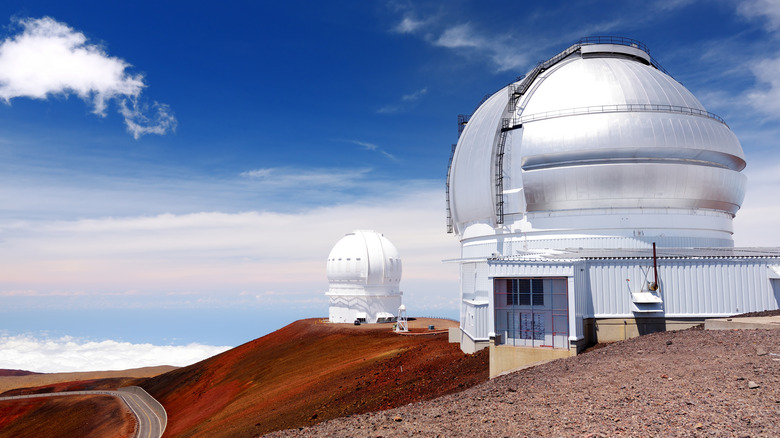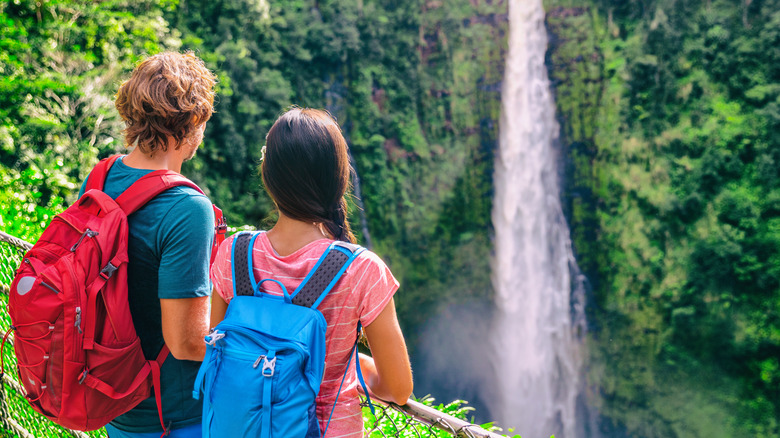Hawaii’s far from the mainland, but that doesn’t stop tourists from boarding long flights and cruise ships to experience the state’s remote islands. According to the State of Hawaii Department of Business, Economic Development, and Tourism, about 1 million tourists flock to the Aloha State in a typical month. They can often be found crowding the beaches of Waikiki, lining up at poke stands, and hiking to the islands’ famous viewpoints.
If you’re not a fan of crowds, you don’t have to scratch Hawaii off your bucket list entirely. Rather, it helps to look off the beaten path, away from the cities and tourist hotspots. One place where you’ll be outnumbered by wildlife — not people — is Hilo Forest Reserve, an area encompassing 64,000 acres of practically untouched land. The nature reserve was established in 1905 to protect the natural habitat and local watershed, and since then, it’s largely remained off of many tourists’ radars. If you want to see the real, original Hawaii, this is it.
Be one with nature at the Hilo Forest Reserve

Hawaii’s Hilo Forest Reserve is divided into nine sections, with the Hilo Watershed Reserve being the largest. Throughout the different sections, you’ll be treated to lush foliage as far as the eye can see. Woven between the towering trees are tranquil creeks and waterfalls that you’re unlikely to find in many travel guides. Consider Hilo Forest Reserve the perfect escape when you want to appreciate Hawaii’s captivating nature without competing with dozens of other tourists for a view.
If you don’t consider yourself much of a forester, that’s okay — despite how well-preserved the area is, dirt trails are available in some parts of the reserve, so you don’t have to trek through tall grasses and untamed forest to explore. One of the most popular trails is the path to the Dr. David Douglas Memorial monument from Mana Road. Enjoy the sounds of the birds and the leaves rustling in the wind all to yourself.
Given how nature clearly dominates the scene in Hilo, make sure to remain respectful of the forest reserve when visiting. The Hawai’i Tourism Authority urges travelers to be respectful tourists in Hawaii by avoiding private or “kapu” (forbidden) areas, refraining from taking rocks and other items from the land, sticking to trails when available, and not leaving food and other litter behind in the forests.
How to find Hilo Forest Reserve

The Hilo Forest Reserve is located on Hawaii’s Big Island, far from the crowds of Oahu. You’ll find the reserve nestled between other natural reserves in the northeast region of the island. Given how vast the area is, there are numerous ways to reach it by car, though parking can be hard to come by. Consider taking the long drive to the Keanakolu Ranger Station (start in Waimea for the safest route), where you can begin your hike into the woods.
You’ll also find plenty of attractions and sightseeing spots surrounding the nature reserve. Hakalau Forest National Wildlife Refuge is an area neighboring the Hilo Forest Reserve that’s home to birds, horses, and other wildlife. Note that Hakalau Forest may require you to have a guide before entering the premises. Make your way west of the forest to Mauna Kea, a mountain summit with a stunning view of the island.
The eastern coast, just past Hilo Forest Reserve, is dotted with numerous beach towns and breathtaking sights. For a glimpse of a postcard-worthy waterfall, stop by Akaka Falls outside of Honomu. If you’re more of a doer than a looker, head to Umauma Falls instead, where you can zipline over the Umauma Stream. Once you’re running low on energy from all the exploring, make your way to Hog Heaven Coffee to sip java while touring the coffee farm.

